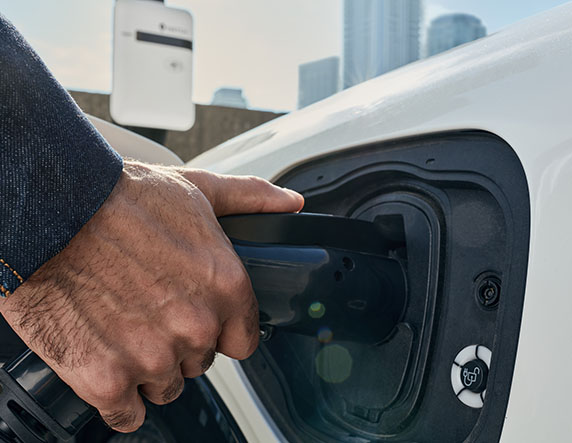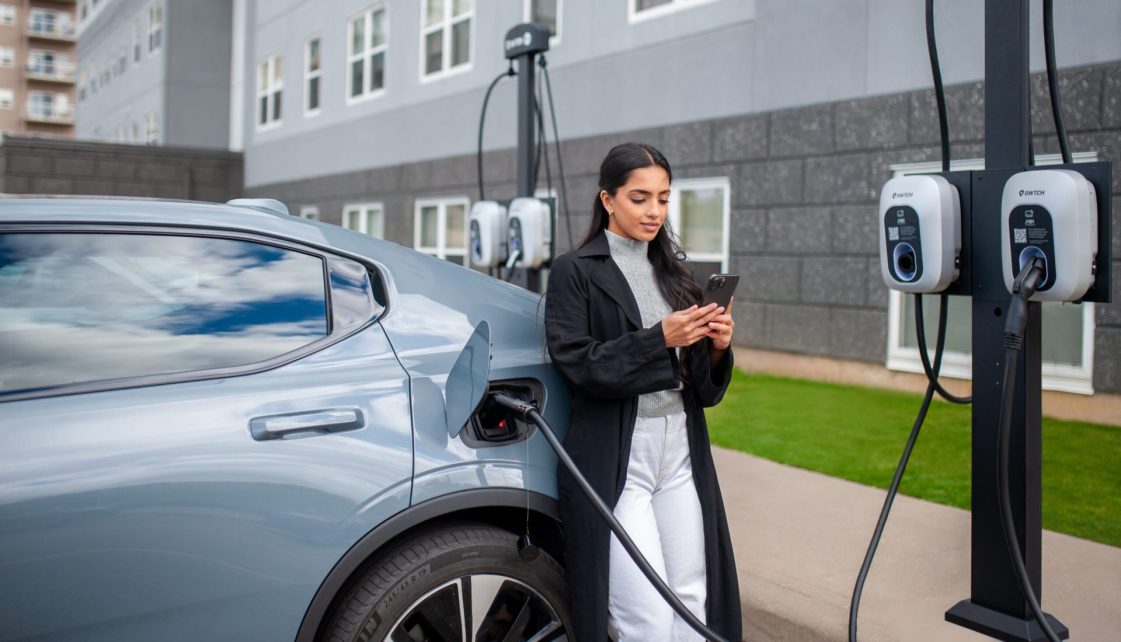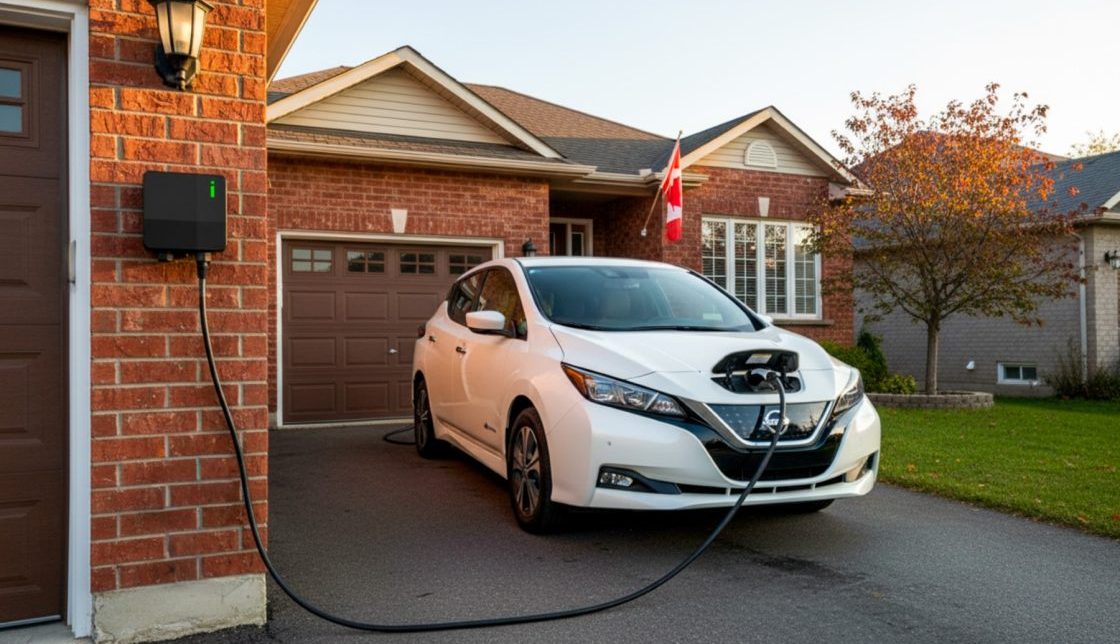EV charging for colleges and schools: Your guide to reliable, affordable charging for your whole community
The electric vehicle fleet is growing quickly, and high schools, colleges, technical schools, and other educational institutions need to have EV chargers available as more students, faculty, staff, and visitors expect to be able to plug in their vehicles on campus or at adjacent facilities. With many schools also eager to establish their sustainability credentials, installing EV charging is an obvious, easy win to pursue.
But how do campuses install charging in such a way as to enhance their other sustainability initiatives, ensure student and staff satisfaction, and boost the overall appeal of their campus?
Let’s dive into the current need for chargers at schools and the best way to build a reliable, sustainable, and affordable EV charging solution for your campus.
The Growing Demand for EV Charging on Campuses
Research by insurance comparison site The Zebra found younger generations to be the most enthusiastic about and interested in electric vehicles. More than two-thirds of Gen Z respondents indicated that they had considered or were considering an electric vehicle, compared with about half of millennials and only a third of baby boomers.
With most students falling at the younger end of the age spectrum and the cost of EVs dropping each year, it’s almost certain that students will be among those leading the way in EV adoption over the coming years.
There’s evidence of a similar trend for faculty in most institutions of higher learning, too. A 2023 poll from Ipsos found that 47% of people with a college degree—which surely includes a large majority of lecturers and instructors across schools of all kinds—are interested in purchasing an electric vehicle, compared with about 31% of the general population.
Taken together, these statistics show that while there’s a growing need for EV charging in society in general, there’s likely a faster-growing need at educational institutions in particular. And there are plenty of reasons for schools to move quickly to address that need.

The Strategic Advantage of EV Charging for Colleges and Universities
EV charging aligns with institutional sustainability initiatives
There’s a widespread expectation that schools will serve as leaders in helping to usher in a better tomorrow. This is a part of why so many institutions have ambitious sustainability goals, and why many students and faculty are big supporters of sustainability initiatives.
In installing EV charging, educational institutions gain the opportunity to deliver a tangible, measurable improvement to their campus’ sustainability.
Some EV charging solutions, like SWTCH, even include detailed reporting that reveals the amount of CO2e emissions averted by the energy delivered through your charging stations. In reviewing these kinds of reports, you’ll quickly find your charging stations are making a real impact, and be able to share the good news with your community.
On-campus charging can boost your student and faculty recruitment initiatives
A survey from Students Organizing for Sustainability International found that “92% [of respondents] agree that sustainable development is something which all universities and colleges should actively incorporate and promote.” Additionally, “90% of respondents say they are willing to accept a salary sacrifice to work in a company with a good environmental and social record.”
In other words, not only is there a strong desire on the part of students to see their chosen educational institution take strong measures to improve sustainability, but these same students are willing to make large life decisions in part on the basis of sustainability.
By installing EV charging stations, you gain a tangible asset that can help you communicate your commitment to sustainability during tours, in brochures, on your website, and in other recruitment efforts. It’s an easy way to provide your campus a nice boost in appeal.

For EV drivers among the student population, faculty, and staff, you’ll also have another factor in your favor: convenience. Being able to plug in vehicles at work or school can be hugely beneficial, particularly for individuals who live in environments where EV charging isn’t as accessible (such as the many students who live in apartments).
Both demand for and supply of workplace EV charging stations are growing quickly. According to PWC, about 17% of all EV charging stations in the United States are expected to be installed in workplace environments by the year 2030.
As with workers everywhere else, the faculty and staff at your institution will want EV charging available to them. By installing EV charging stations, you’ll be able to deliver the kind of convenience that makes your school an even more attractive location to live and work.
EV charging stations can help you connect with the public
For larger campuses, EV charging can deliver benefits well beyond the day-to-day for students and staff. Those who host the public for sports, lectures, conferences, and other kinds of events will find a great chance to make a good impression by having EV charging stations available.
Here again, is a chance for the EV charging stations to serve as a highly visible example of the school’s commitment to sustainability, but the benefits go beyond that, too. Drivers of electric vehicles often appreciate opportunities to plug their vehicles in while they would otherwise just be sitting idle for a few hours. And given that EV charging stations tend to be placed quite favorably within a parking facility, you can bet that the charging stations will see frequent use during public-facing events.

The Best Ways to Fund and Afford EV Charging for Your Campus
Though EV charging can seem expensive on its face, the truth is that there are a number of smart technological and financial choices that can dramatically reduce the cost of securing and installing chargers. Here’s a quick look at a few of the most significant ones you should know.
Take advantage of as many funding programs as possible
Right now, there are many incentive and rebate programs that exist to drive down the cost of purchasing and installing EV charging stations. These programs won’t exist forever, but while they do, it’s important to secure funding from as many programs as possible in order to lower your bill.
With programs available at the federal, state, local, and even utility levels, there are many possible options available to you, depending on where your campus is located. If you would like help identifying the best programs for your institution—and then applying to them—reach out to our team. We’ve helped secure millions of dollars in funding for EV charging stations across North America, and we’ll be happy to help you as well.
Incorporate charging fees into your operating budget for the chargers
One of the rather unique positives of EV chargers is that they, over time, can pay for themselves.
Typically, the expectation is that an individual who uses a charging station to charge their vehicle will pay for the cost of the electricity they’re consuming plus a modest additional charge that goes to the owner of the charging station.
On a per-charging session basis, this isn’t much. But if your stations get reasonably good use over the course of several years, these fees quickly add up. After a few years, many properties fully pay back their costs for procuring and installing the EV chargers, and can even begin to generate a profit (provided there are no applicable laws forbidding them from doing so).
Whatever your plans for your EV charging, how much you intend to pay, what your budget is, etc. you should be sure to account for likely revenue generated by the charging stations themselves once they are installed. You might be surprised by how much they wind up delivering for you.
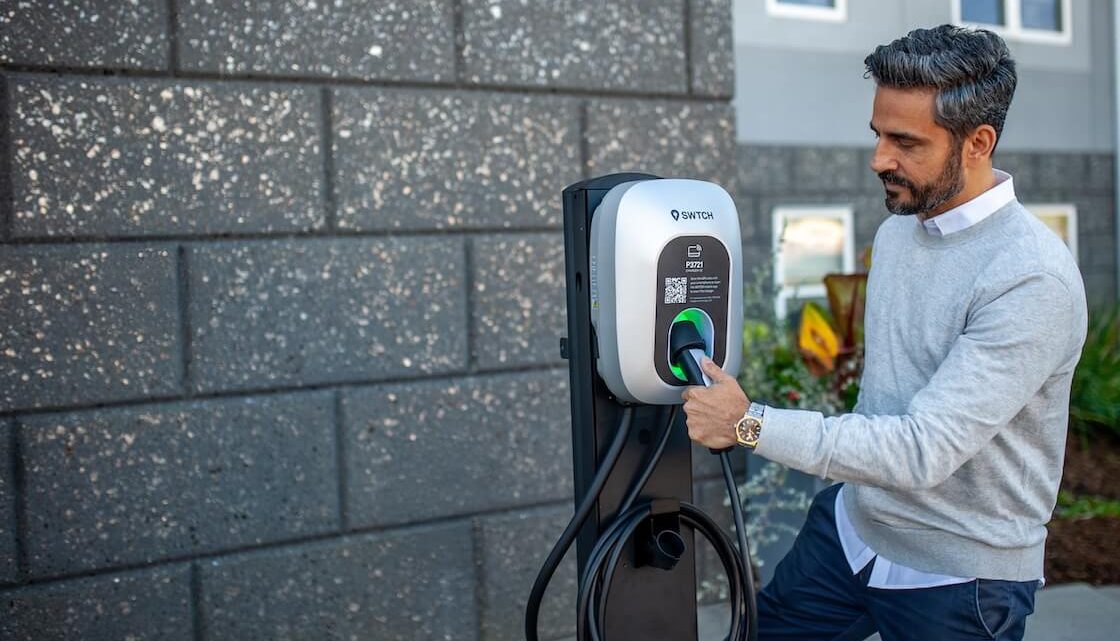
Consider alternative models for paying for your charging stations
Though securing funding can dramatically lower the cost of installing EV chargers, it’s possible to eliminate an upfront cost of any kind by simply opting for a different sort of contract: EV charging-as-a-service.
With EV charging-as-a-service (EV CaaS), all costs for hardware, installation, and even electrical upgrades are divided into reasonable monthly payments to be paid over the lifetime of a contract (with SWTCH, this contract typically lasts about five years).
This approach can make installing EV chargers even easier to manage while still allowing you to benefit from the exact same funding programs available for an outright purchase.
When it comes to an upfront purchase vs an EV CaaS arrangement, there’s no objectively right or wrong choice, but it’s worth considering both options to ensure you arrive at the best approach for your specific institution.
Your Roadmap to Installing Effective EV Charging for Schools
If you intend to install EV charging stations at your campus, it’s important that you go about the process in a way that ensures your EV charging infrastructure…
- Properly addresses existing demand for EV charging
- Maximizes the value of your dollar in terms of the number and kind of charging stations installed
- Meets any federal, state, or local requirements for EV charging infrastructure, including any specific requirements for educational institutions
- Provides a clear pathway to expanding the number of charging stations installed as demand continues to grow
Fortunately, these are all elements that are relatively simple to account for with proper planning. Here are some steps to take.
1: Assess your campus’ demand for EV charging stations
When installing EV charging stations, you want to install at least as many charging stations as needed to address the present demand for charging. In an ideal scenario, you’ll also have at least a bit of excess capacity so that you can accommodate increases in demand over the next few years without having to complete additional installations.
One easy option is to issue one or more surveys to see how many people drive an electric vehicle or wish to purchase an electric vehicle in the next few years and, of those groups, how many would make frequent or occasional use of EV charging on campus.
Likely, you’d want to survey students, faculty, and staff and do so in such a way as to be able to segment the responses to understand where your demand is concentrated. You might choose to locate chargers differently if you notice that the majority of your demand comes from faculty, for example, instead of students.
You should also review any feedback you have received over the past couple of years to see how many requests have come in around EV charging—odds are quite good that you’re getting more such requests than you used to.
If you’re not entirely sure how many chargers would be needed to address existing demand and provide a buffer for the future, chat with your EV charging solutions provider to get their input. They should be able to work with you to come to the right number.
2: Choose the right kind(s) of charger for your institution
There are many kinds of EV chargers out there to choose from, and you’ll want to do a bit of work to ensure that the ones you select are the best fit for your institution and the drivers being served.
In general, the best experience will be produced by installing a large bank of level 2 chargers. These are fast enough to deliver a nice increase to a battery’s state of charge, especially over the course of several hours of charging—perfect for students or staff spending hours on campus at a time.
Depending on the kind of traffic you see on your campus, there can also be a case for installing one or two DC Fast Chargers (DCFC) in addition to the bank of level two chargers. Where a level 2 charger would take a few hours to bring a battery from near-empty to full, a DCFC charger can accomplish the same in anywhere from 20 minutes to just over an hour.
Just note that these charging stations are much, much more expensive. Depending on the hardware and the electrical upgrades required to operate a DCFC charger, you might be looking at a bill of tens or hundreds of thousands of dollars per charger.
At this stage of the EV charging game, most campuses will be best suited by using their dollars to install as many level 2 chargers as they need rather than also introducing DCFC chargers. But it’s worth giving the idea careful consideration to ensure that, whatever you wind up adopting, it suits the needs of your campus.
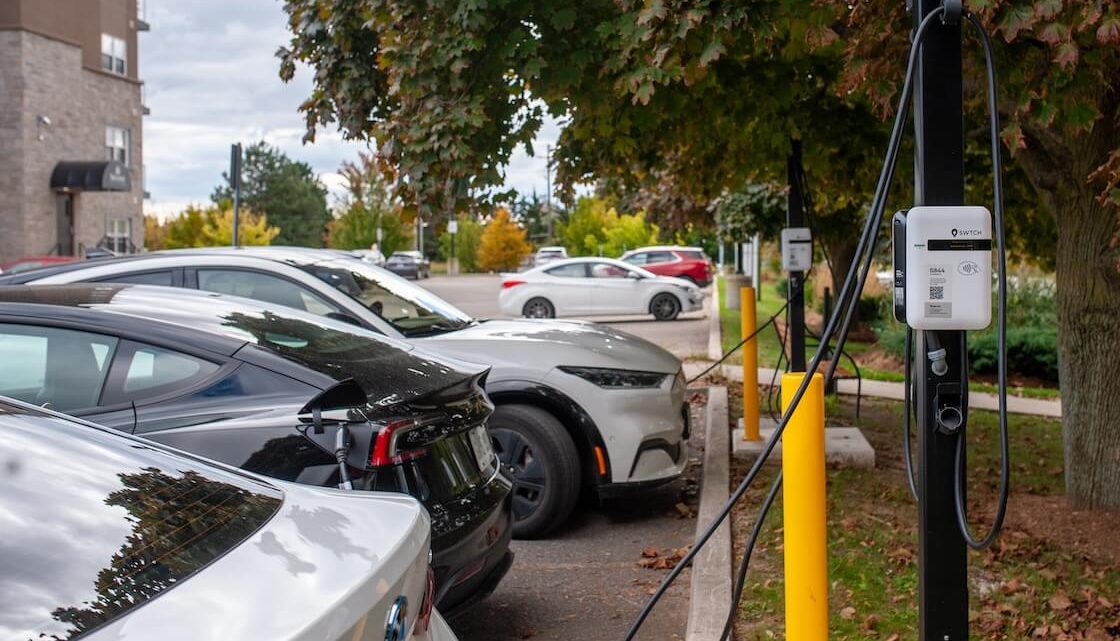
3: Familiarize yourself with applicable Permits and Zoning Regulations
Odds are, there will be specific permits and zoning regulations that your EV charging installation will have to adhere to. Either on your own or with the assistance of your solutions provider and installation partner, be sure to research any and all requirements necessary for your project to adhere to applicable building codes.
This is also the right time to make sure that your future EV charging stations will meet any requirements imposed by the funding programs you apply to.
Once you figure out which permits are needed and what the requirements and timelines are for your funding programs, be sure to apply as soon as you are able so that progress can begin immediately.
4: Choose a solution with intelligent energy management to build for the future
Your EV charging needs are going to change within just a few years. Many more EVs will be on the road than there are now, and more people will be looking for convenient places to plug in. This is going to be especially true for students, as the apartment complexes where many of them will live are generally lagging behind when it comes to meeting demand for charging.
The solution? Install chargers with intelligent energy management capabilities.
By default, each level 2 EV charging station requires its own electrical circuit to function. In order to install multiple chargers, then, you would need to have an equal number of circuits available, which most properties don’t. To complete the electrical upgrades necessary to add a sufficient number of circuits is generally very expensive.
This problem is easily solved with load management technology. At a basic level, load management can allow up to four stations to coordinate their charging efforts along a single circuit. With more advanced solutions, such as the load management solution offered by SWTCH, you can operate as many as 20 charging stations off of a single circuit, with intelligent rebalancing of electrical demand going on behind the scenes to allocate energy where it is needed most.
Particularly as EV charging demand increases and educational institutions wind up needing to install a great many EV chargers, load management technology will be necessary to get enough chargers installed. It simply won’t make financial sense to do it any other way.
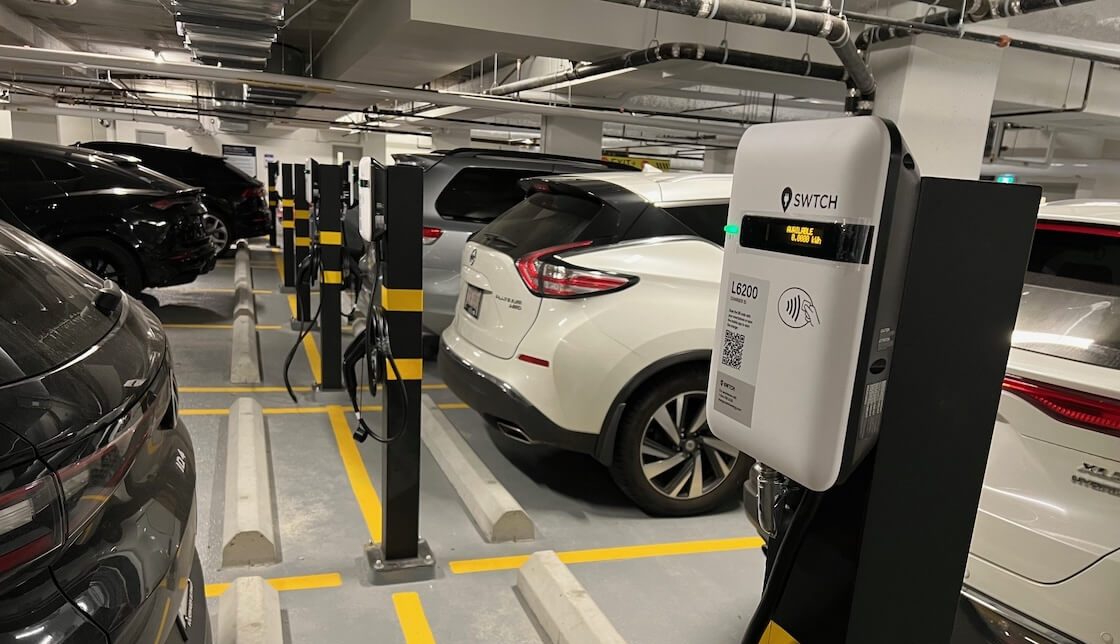
Educational institutions hold a special place in society. They’re hubs of innovation, places of learning and community, and generally leaders in the movement towards a more sustainable future. By adopting EV charging, schools of all kinds can meet a new, growing need in its community for accessible and reliable EV charging, while bolstering existing commitments to sustainability leadership. It’s a move that is well worth pursuing, and with the funding that is available today, it’s one that need not come at an astronomical cost.
Ready to unlock the benefits of great EV charging for your campus?

